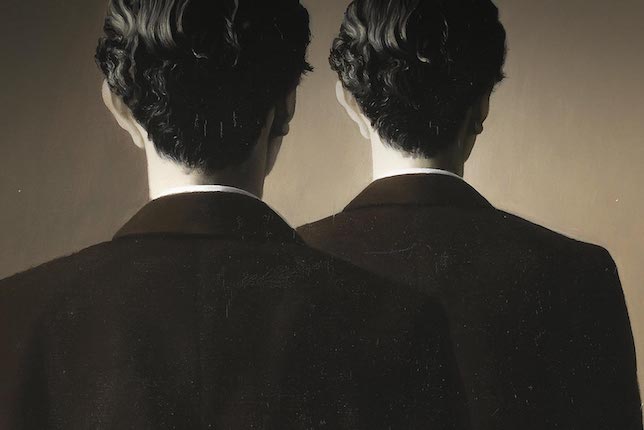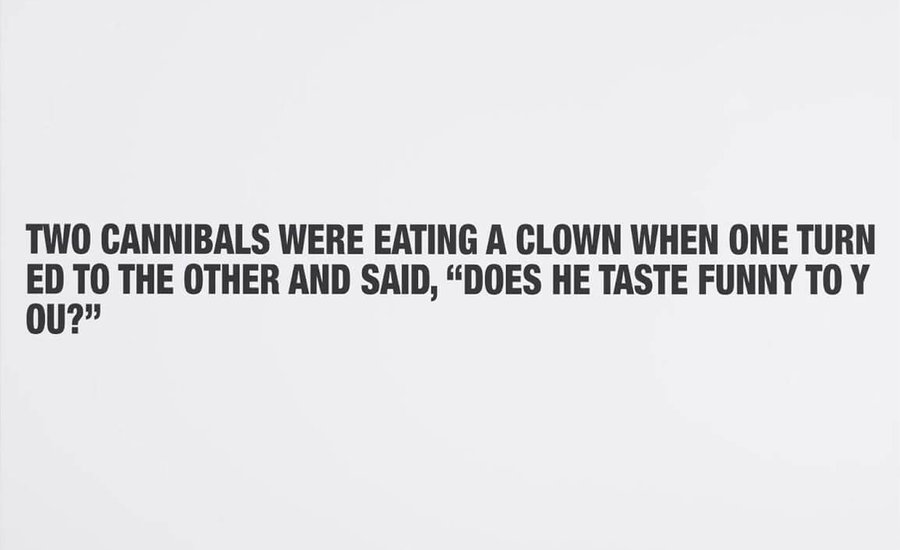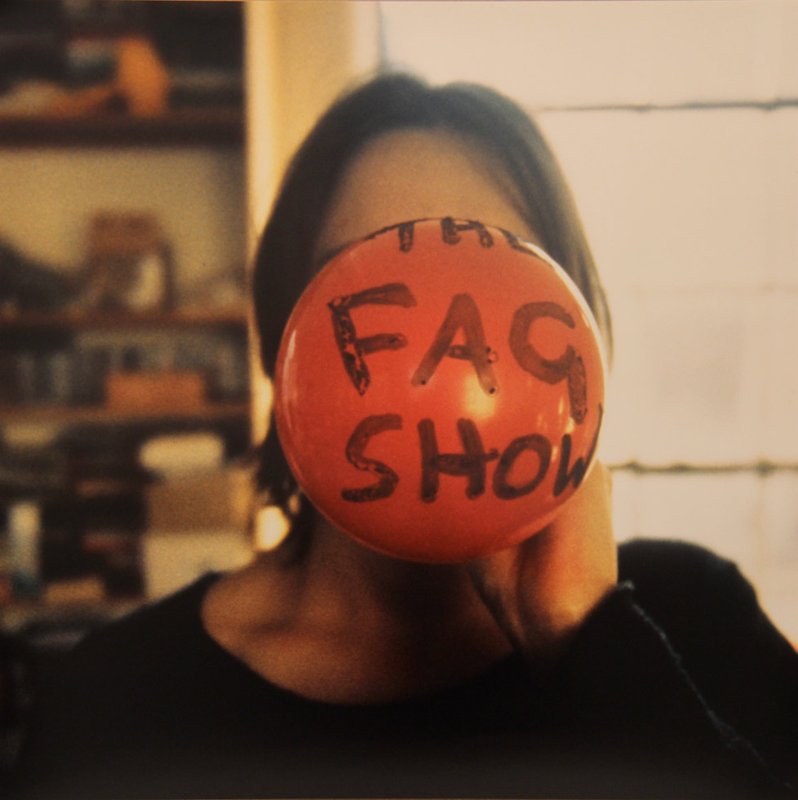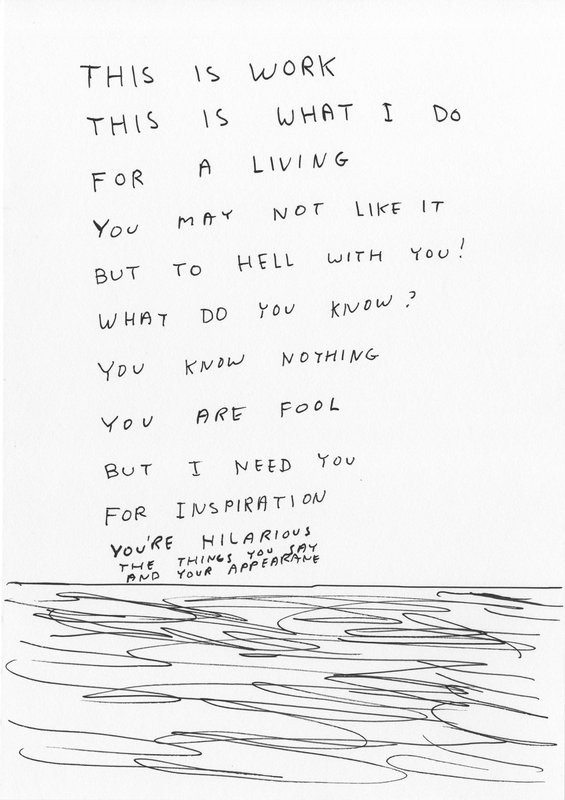https://blog.artsper.com/en/get-inspired/contemporary-art-humour/
Change language
https://blog.artsper.com/fr/inspirez-vous/lhumour-dans-lart-contemporain/
Humour in Modern and Contemporary Art
Traditionnally, we have this idea that art is supposed to be a serious matter. At the opposite humorous art would be on the lowest ladders of our mental scale. However, artworks that make us smile or laugh seem to be invading galleries and art fairs: quips, tricks played to the spectator, pile-ups of incongruous objects and so on. Is this phenomenon the reasons of the lack of understanding between contemporary art and its audience today ? Maybe laughing in front of art contribute to some considering it as a joke, of which the spectator can only be the victim.
Artsper retraces the history of humour in art of the 20th century. Plus it ponders over its place in the contemporary art world today.
As a start, maybe we should try to define humor… If it is often described as “what makes us laugh”. It seems that this very definition varies a lot from one person to another, since people do not laugh of the same things.
Humour draws on gaps, distance from codes, social conventions and preconceived ideas. In this sense, humour is always transgressive. No wonder that it is everywhere in art today, since contemporary creation has made transgression one of his mission.
1. HUMOUR AND ART: DADAISM AND READY-MADE

The turning point of humour in contemporary art dates back to 20th century with art movements such as Dadaism and the appearance of ready-made in art.
Dadaism is an intellectual, literary and artistic movement that arose in the chaotic context of the WWI. Dadaism defines itself by the rupture with social conventions through humour, derision and irreverence. Humour is therefore at the foundation of this movement, as its name well shows. “Dada” has no meaning in itself, but is a simple joke in front of the absurdity and gravity of the war. Dadaism is all about freedom and creative spontaneity. Artistic creation wise, it translated to quip artworks, play on words, ready-mades and artistic performances. He explore the part of chance in the creative process.
Marcel Duchamp joined the movement very early on. The revolution of its fountain is to be understood within the frameworks of the anti-establishment Dadaist movement. What is a ready-made after all if not a trick played to the spectator consisting in presenting him a daily life object as a work of art?
2.HUMOUR AND ART: SURREALISM

Soon after Dadaism came the Surrealist movement, that adopted the same light and provocative attitude than the Dadaists, but integrating the world of irrationality and dream.
The Surrealists, who were strong admirers of Sigmund Freud and psychoanalysis, advocate for the liberation of desires based on technics reproducing the mechanisms of dream and reducing the place of consciousness and will power to a minimum.
Surrealist creations are often made of the combination of bizarre and heterogeneous elements. They are the ones who came up with “the exquisite corpse” game, consisting in a visual or verbal collaborative assembling where participants ignored what others were doing, which led to absurd and humorous creations!
Both Dadaism and Surrealism praised and encouraged humour and game in artistic creation. Though it was a light and childish humour, based on bizarre associations coming from a playful state of mind in reaction to the weight of the war years.
3. CONTEMPORARY ART AND DARK HUMOUR

“La Nona ora”, Maurizio Cattelan, 1999
What is different about humour in contemporary art is that it is a pretty dark one. In comparison to the playful and teasing humour of the Dadaists and Surrealists, more and more artists resort to dark humour and irony as a weapon in social and/or political protest.
Today, artists claim as one of their mission to denounce the rules that society impose on us and its deviances: consumerism, waste, inequality, environmental issues are recurring themes in contemporary creation.
Some internationally known figures of the art world have built an empire on dark humour art. For example, Maurizzio Cattelan, to start with, which body of work is all together paradoxical, provocative, dark and funny.
His work entitled “La Nona Ora” for instance, is a hyperrealist sculpture of former Pope Jean Paul II on which a meteor seems to have just fallen. Here, Maurizzio Cattelan uses humour to call the papal institution into question. The staging of an accident to such a worldwide beloved figure is in itself highly provocative and subversive. And as we stated before, this is the very reason why this piece is funny.
Maurizio Cattelan’s humour is far from the free playful mindset praised by the Dadaists and Surrealists. This biting and dark humour aims at shuffling the foundation of society and comes from a kind of disillusion in front of society. Maurizio Cattelan once said in an interview that he had never done anything more provocative or brutal than what we see every day around us. In comparison to daily news, his works are not cynical at all. In short, they are simply powerful enough to wake people up.
4. STREET ART

In a completly different style, but with a similar type of spirit, street artist Banksy is another artist who resort to subversive humour. In his work, dark humour and irony are weapon for political protest. He criticizes the capitalist economy, governments, authority in general, army and social conventions.
It is no surprise that countries with repressive governments are particularly fruitful in artists using humour to highlight the paradoxes of their society, for example, Yue Minjun and his burlesque work. This world famous Chinese artist has made irony his ultimate device for political criticism. When open criticism is censored, only humour is left as a way to express oneself’s disagreement.
It would be impossible to embrace the large panel of artists using humour at some level in the contemporary art. To conclude, we can recall that art and humour both exist in the dimension of illusion, where a gap with reality is possible. This is the reason why both have the capacity to make us take distance. It opens our eyes about the familiar reality that surrounds us.
There are different types and purposes of humour in art. Lighthearted humour often plays with the codes of the artistic institution itself, and cynical humour used for socio-political criticism. In both cases, humour is far from turning art into a trifle. In fact, we will directly refer to Freudian psychoanalysis here. Humour arises from the ability to play and allow the principle of reality and the principle of pleasure to coexist.
Humour has therefore the ability to reconcile opposites. Lightness in front of the gravity of reality allows us to distance ourselves from our fears. To sum up, humour works as a defense mechanism against shame, depression, anger and despair.
After all, it is possible to say that we expect the same from humour than art: to create a break through our usual reality, an escape from our daily life, and help us live despite the bad that surrounds us.
















